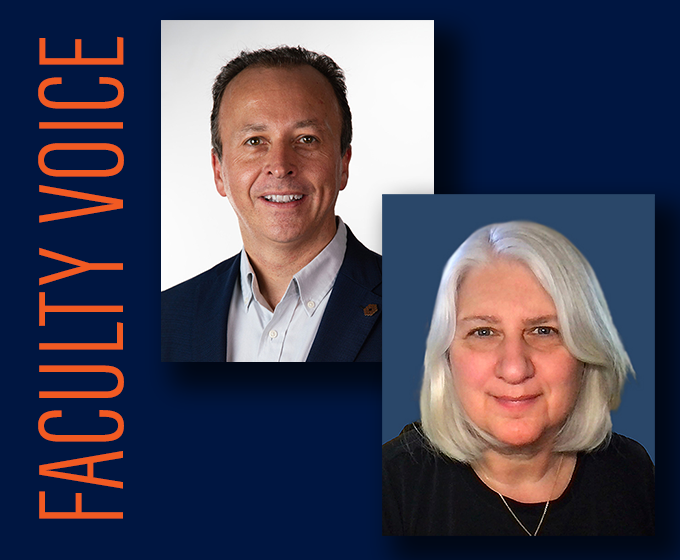
APRIL 6, 2024 — Editor’s note: The San Antonio Express-News ran the following op-ed online on (March 24) and in print on (March 25).
The total solar eclipse taking place April 8 has incredible potential to spur excitement in science, technology, engineering and mathematics, or STEM, education and help shape the next generation, who will look to the stars and beyond.
Events such as the upcoming total solar eclipse and professional expertise intersect in exciting ways.
A total solar eclipse results from an extraordinary coincidence: the moon and the sun appearing to be the same size in the sky due to the moon's smaller size but closer proximity to Earth. The moon's elliptical orbit around the Earth causes variations in its distance, affecting its apparent size. So, when the moon is slightly farther away than usual, an annular eclipse can occur, as it did in October.
Although the moon orbits Earth monthly, the infrequency of total solar eclipses is due to the tilt of Earth's axis and the alignment of the moon's orbit, causing a total solar eclipse about once every 375 years at any given location on Earth.
Those are the key elements to understanding the eclipses San Antonio has been fortunate enough to experience within a single year. Explaining these facts offers a way to introduce the symphony of the spheres to an audience eager to understand by setting our place in this celestial masterpiece in context.
Though lasting mere minutes, a total solar eclipse has the potential to generate excitement in the sciences that could last a lifetime. Space exploration is on track to become a multibillion-dollar industry that requires collaboration between government, industry and education, all of which are dependent on a multitude of professions.
NASA and the space industry employ scientists and engineers. They also employ nutritionists who design the food for astronauts in space, communication personnel who connect terra firma to space, and psychologists who study the impact of space travel.
We’ll not only enjoy and marvel at the April total solar eclipse but also use the event to inspire those around us. Today, when space travel seems closer and more tangible than ever, we are combining our efforts to help the city take a leading role in training the next generation's workforce to advance humanity’s understanding and exploration of the universe.
For example, San Antonio District 4 Council Member Adriana Rocha Garcia is working with the University of Texas at San Antonio, Frost Bank, NASA Johnson Space Center’s Office of STEM Engagement, the U.S. Space Force, and Spurs Sports and Entertainment to make this once-in-a-lifetime experience accessible to students from school districts who are not on the path of totality.
More than 500 students in San Antonio will witness the total solar eclipse at an event on the city’s Northwest Side and participate in learning opportunities provided by several community organizations on April 8.
Soon, people of every age will have the opportunity to experience a unique astronomical event. This celestial masterpiece has the potential to spark a student’s interest in STEM, possibly nurturing a budding professional whose future will be as boundless as the stars.
UTSA Today is produced by University Communications and Marketing, the official news source of The University of Texas at San Antonio. Send your feedback to news@utsa.edu. Keep up-to-date on UTSA news by visiting UTSA Today. Connect with UTSA online at Facebook, Twitter, Youtube and Instagram.
This event will acknowledge graduating seniors from the McNair Scholars program at UTSA before inducting the new cohort of scholars into the program.
North Paseo Building (NPB 5.140), Main CampusAt this memorable celebration, UTSA graduates will be introduced one-by-one to cross the stage and accept their doctoral degrees.
Arts Building Recital Hall, Main CampusRoadrunner Walk is an event for graduating students to have a memorable walk on campus to celebrate an important milestone and their achievements. Graduates will walk along the Paseo while being celebrated by the UTSA community, friends, and family members.
Student Union Paseo, Main CampusJoin us for a tribute to Willie Velásquez, honoring the legacy of Willie Velásquez, a pivotal figure in shaping the history of Latino and Hispanic participation in the American voting process. Delve into his life and contributions as a champion of Latino voting rights. Moderated by UTSA's Teresa Niño, the event will feature influential voices, including Jane Velásquez, María Antonietta Berriozábal, Dora Oliva, and Anthony Gonzales.
Buena Vista Building, Gregory Luna Room, Downtown CampusCelebrate the accomplishments of College of Education and Human Development, College for Health, Community and Policy, College of Sciences and University College.
Alamodome, 100 Montana St.Celebrate the accomplishments of Alvarez College of Business, College of Liberal and Fine Arts and Klesse College of Engineering and Integrated Design.
Alamodome, 100 Montana St.The University of Texas at San Antonio is dedicated to the advancement of knowledge through research and discovery, teaching and learning, community engagement and public service. As an institution of access and excellence, UTSA embraces multicultural traditions and serves as a center for intellectual and creative resources as well as a catalyst for socioeconomic development and the commercialization of intellectual property - for Texas, the nation and the world.
To be a premier public research university, providing access to educational excellence and preparing citizen leaders for the global environment.
We encourage an environment of dialogue and discovery, where integrity, excellence, inclusiveness, respect, collaboration and innovation are fostered.
UTSA is a proud Hispanic Serving Institution (HSI) as designated by the U.S. Department of Education .
The University of Texas at San Antonio, a Hispanic Serving Institution situated in a global city that has been a crossroads of peoples and cultures for centuries, values diversity and inclusion in all aspects of university life. As an institution expressly founded to advance the education of Mexican Americans and other underserved communities, our university is committed to promoting access for all. UTSA, a premier public research university, fosters academic excellence through a community of dialogue, discovery and innovation that embraces the uniqueness of each voice.